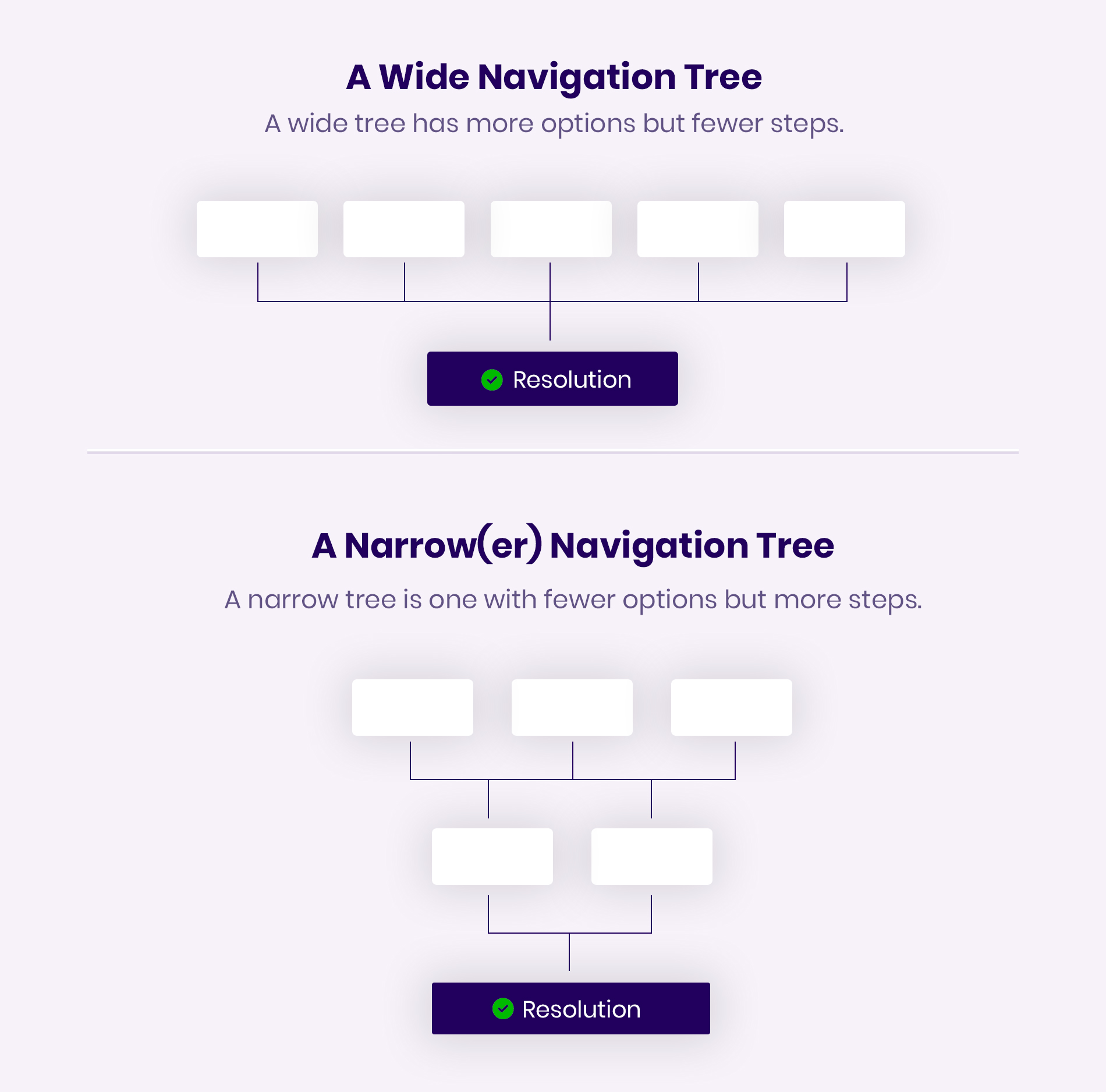What it is
A Help Navigation Tree is a representation of the user journey from encountering an issue to achieving resolution and closure to their issue. It outlines the sequential steps that users should follow to navigate through the support process effectively and efficiently.
Our approach in developing an effective Help Navigation Tree is as follows:
- Streamline the support process to minimise complexity and cognitive load for users.
- Carefully curate each step of the journey to offer a concise yet comprehensive set of options. This ensures that users are presented with only the most relevant choices at any given point.
- Reduce options to not only simplify the user’s decision-making but also to accelerate the resolution process by guiding users efficiently toward a solution.
A Help Navigation Tree can be narrow or wide; we recommend a narrow tree. A narrow tree is one with fewer options but more steps. Contrarily, a wide tree has more options but fewer steps.

The Help Navigation Tree breaks down the problems, thus building objectivity for end users to comprehend and for the customer support teams to follow the same issue breakdown approach.
A narrow tree is more effective than a wide tree for several reasons:
Clear and Focused: A narrow tree has a clear and focused path to resolution. By limiting the number of options available at each step, users are less likely to feel overwhelmed or confused.
Efficient: With fewer options to consider at each step, users quickly progress through the support process. They are less likely to spend time exploring irrelevant or unnecessary options.
Reduced Risk of Errors: A narrow tree minimises the risk of users making mistakes or choosing incorrect options in the support journey.
End User Satisfaction: By guiding users along a clear and structured path, a narrow tree helps to streamline the support experience and reduce frustration.
In contrast, a wide tree with more options at every step overwhelms users with choice and complexity. This can lead to decision paralysis, where users struggle to make progress due to the sheer number of options available.
